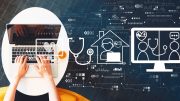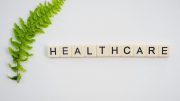For the healthcare industry, interoperability seems to fall squarely into the “no-brainer” category. The frictionless exchange of health information between providers and with patients is beneficial for all parties involved, but the construction of a unified interoperability infrastructure has been, to put it mildly, an exercise in patience. Given the value of healthcare data and the strict compliance dictating its usage, it’s no surprise that healthcare organizations are traditionally overly protective of their patient data. That mindset has certainly quelled the market demand for and implementation of technology that can empower greater health interoperability.
However, there are a number of factors simultaneously converging, and it seems we may be on the precipice of an era that ushers in a new point of view on health interoperability and, with it, technology that will make it all possible.
COVID-19 magnifies need
The pandemic created an instant need for more comprehensive health information exchange mechanisms as experts began working tirelessly to analyze any number of data points to track the COVID-19 spread. But in many ways, the healthcare industry was not ready to be “interoperability-forward” with the flip of a switch.
According to Dr. Emad Rizk, many doctors had to become “medical detectives” as they attempted to create a 360-degree view of their patients’ medical history. Dr. Rizk added, “Public health agencies struggled to cobble together data from disparate systems to help identify major risks associated with the disease, and breakdowns in continuity of care occurred when primary care physicians were left out of the notification process.”
While the health industry once managed without advanced interoperability in non-emergency situations, the lag in adoption proved to be a harrowing wake-up call in light of the pandemic and should serve as motivation to fuel more innovation.
Patients are more proactive
Another unexpected COVID-related development was the increase in patient demand for information. During the pre-pandemic period, most of us thought about our health only when it affected our day-to-day lives, like treating a chronic condition. But COVID-19 has given many of us reason to be more engaged in our healthcare experience beyond an annual checkup. People have gotten a crash course in navigating the healthcare ecosystem and need their data to follow them to visit PCPs, specialists, the pharmacy, and wherever their healthcare experience takes them.
However, patients don’t actually want data — they want to know what the data actually means. For example, if a banking app only listed transactions without the latest account balance, it wouldn’t be nearly as helpful. Further, if it didn’t include all transactions, it wouldn’t be particularly helpful either. In healthcare, having all available data allows a healthcare app to contextualize that data into accurate and helpful information to inform good decisions.
The shift is clear: Patients are increasingly taking a consumer approach to healthcare because they now have myriad service options. They will shop around for those that best meet their personal criteria, which includes the availability of experiences that resemble other, familiar tech interactions.
Legislation reduces innovation barriers
Adopting interoperability is transforming from being a good idea to, quite literally, a requirement. The 21st Century Cures Act Final Rule, which gives people free access to their health data via APIs and requires healthcare systems to build the infrastructure to do so, goes into effect later this year. Right now, clinical information sharing is primarily occurring at a business-to-business level where, for example, a health system is sharing data with an EHR vendor.
This rule will open a consumer-directed free exchange of data and, for the first time, create a patient data ecosystem on which developers can build healthcare apps. With data unlocked, we will see ubiquitous apps that help people manage their overall health, as well as niche apps that help address health conditions specific to smaller groups of patients.
It’s also worth noting that many previous digital health apps were administered by health systems and providers. And with the expansion of health apps outside of the purview of healthcare providers, expect to see innovation with a bigger focus on users and their needs. For example, apps could include a kind of “proxy,” allowing people to transfer access to critical health data to a fiduciary who can make decisions for that person should they be unable to do so.
Conclusion
Information is power, and the data the healthcare industry can provide will drive rich information and ultimately decisions to advance more comprehensive care. When the many factors promoting the exchange of information intersect, the promise of interoperability may be realized sooner rather than later.
Article by Niko Skievaski, co-founder and President, Redox





